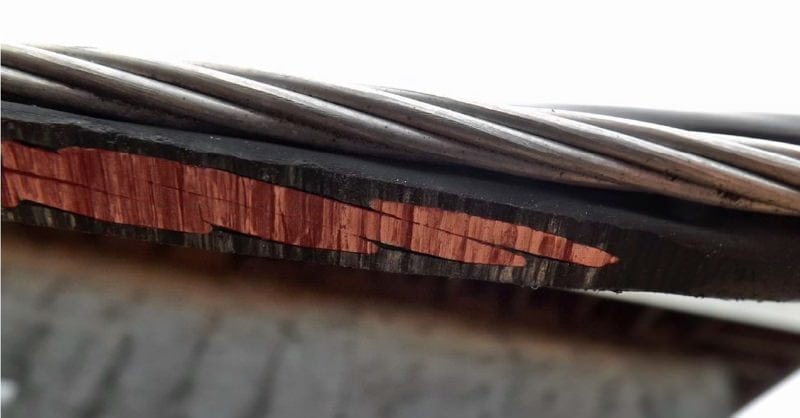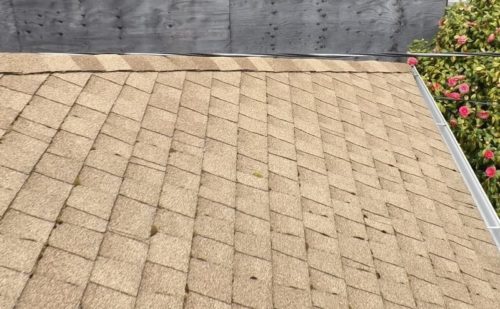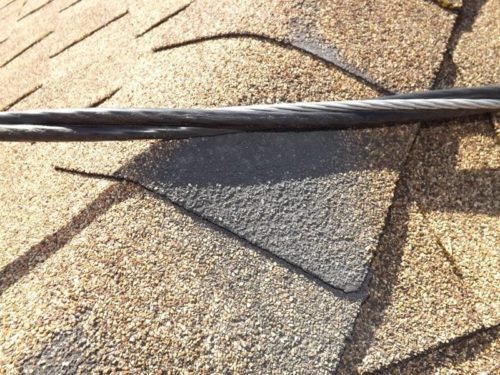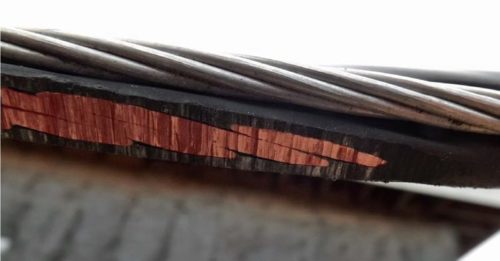
OK–so no brainer–EVERYONE old enough to stick bobby pins in receptacles knows electricity is dangerous. We all know that if we are not careful, that unpleasant tingling feeling can run through our bodies, whether it is from peeing on an electric fence or sticking one’s fingers inside a light socket.
Few of us “deliberately” seek out the pleasures of recreational defibrillation.
On an inspection a while ago I had an electrical service wire that was very close to the roof surface–in fact it was in contact with the roof surface where it crossed the hip of the roof.

In this next picture one can see the black area where the plastic covering of the wire has rubbed off on the sharp granules of the shingles.

For those of you that don’t know, roofing granules are ceramic–that is how they get all the cool colors!
Anyway, where there are sharp ceramic granules in contact with moving plastic-covered-wires bad things are bound to happen to the wire–not the granules so much.
So just how much damage can be done?
As you can see in this next picture the covering is completely worn away leaving the gleaming metal exposed.

For those of you that are not as familiar with what exposed wires look like, I have highlighted the exposed wires in the next picture.

The service wire running to the house is no ordinary current carrying wire. The wire is for all intents and purposes un-fused and only limited by the capacity of the fuse at the transformer out at the Utility company pole–many hundreds of amps.
The question is–how long will it be before enough of the wire is worn away that the bare neutral conductor comes in contact with the hot conductor?
This is why the 4th of July can come at any time of the year.
By Charles Buell, Real Estate Inspections in Seattle
If you enjoyed this post, and would like to get notices of new posts to my blog, please subscribe via email in the little box to the right. I promise NO spamming of your email! 🙂